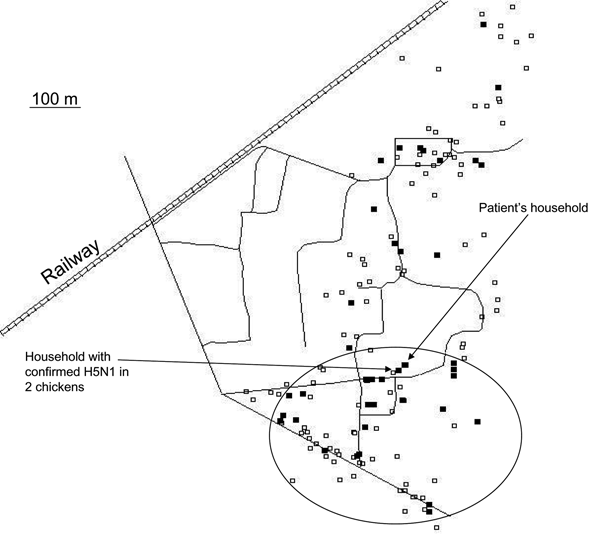Volume 12, Number 10—October 2006
Research
Low Frequency of Poultry-to-Human H5N1 Transmission, Southern Cambodia, 2005
Figure 1

Figure 1. Clustering of 25 households with a high likelihood of avian influenza H5N1 (35%) in chickens, February 27–March 26, 2005, southern Cambodia. White squares indicate visited households without chicken deaths, and black squares indicate households with a chicken flock that was probably infected with H5N1 virus. The cluster is indicated by the circle.
Page created: November 10, 2011
Page updated: November 10, 2011
Page reviewed: November 10, 2011
The conclusions, findings, and opinions expressed by authors contributing to this journal do not necessarily reflect the official position of the U.S. Department of Health and Human Services, the Public Health Service, the Centers for Disease Control and Prevention, or the authors' affiliated institutions. Use of trade names is for identification only and does not imply endorsement by any of the groups named above.